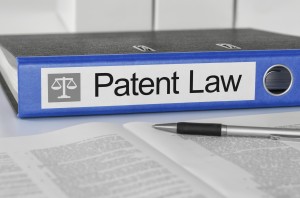 As I wrote over the past two weeks, I recently had the opportunity to attend three patent-focused conferences in the span of a mid-March week. My last stop was at the Federal Circuit’s Judicial Conference, held at the Grand Hyatt in Washington, D.C., on a chilly Friday morning. If all this conference presented was the chance to hear from entire Federal Circuit on hot-button patent issues, it would have been enough. Throw in presentations by Chief Judge Roberts and Senator Orrin Hatch, and it was no surprise that this was a standing-room only event with 700+ attendees in the heart of our nation’s capital. As with the past two weeks, for the purposes of this column, I want to focus on three points of discussion that I found particularly informative. (I did have to leave early, so my comments are based on the morning’s content only.)
As I wrote over the past two weeks, I recently had the opportunity to attend three patent-focused conferences in the span of a mid-March week. My last stop was at the Federal Circuit’s Judicial Conference, held at the Grand Hyatt in Washington, D.C., on a chilly Friday morning. If all this conference presented was the chance to hear from entire Federal Circuit on hot-button patent issues, it would have been enough. Throw in presentations by Chief Judge Roberts and Senator Orrin Hatch, and it was no surprise that this was a standing-room only event with 700+ attendees in the heart of our nation’s capital. As with the past two weeks, for the purposes of this column, I want to focus on three points of discussion that I found particularly informative. (I did have to leave early, so my comments are based on the morning’s content only.)
Before getting further into the discussion, I will note that the organizers were kind enough to allow me to attend on a press credential. While I am a practicing lawyer, and not a journalist on any level other than through this column, I consider it important to keep in mind that my firm has pending matters before the Federal Circuit, and nothing I say in this column is meant to reflect on any position I may take on behalf of my clients before that tribunal. Further, I will refrain from attributing any comments to any particular judge, in line with both the conference’s media guidelines and my own belief that it is the content of the message, rather than the person delivering it, that is of greater interest to this column’s broad-based readership. Disclaimers done for, let’s take a look at some key messages from the conference.
First, it is clear that the Federal Circuit continues to see that its role as the gatekeeper of all things patent has only been enhanced by the implementation of the America Invents Act (AIA) and the resultant flood of appeals arising from PTAB post-grant proceedings such as IPRs. While the statistics show a slight decline in the number of PTAB appeals, the declining number of district court patent filings ensures that reviewing the PTAB will continue as a major component of the Federal Circuit’s brief for the foreseeable future. One estimate was given that patent issues comprise more than 80% of the Federal Circuit’s current workload, with an expectation that things would continue at the same level going forward.

Gen AI: Your Legal Research Assistant, Not Your Replacement
Here's how you can spend more time practicing law, and less time sorting, sifting, and summarizing.
Now, the Federal Circuit has been reviewing PTAB decisions for a long time. But the AIA’s creation of the IPR regime not only resulted in the PTAB expanding to include hundreds of new administrative patent judges, but it also increased the number of Federal Circuit appeals from the PTAB twentyfold. As a result, the Federal Circuit has had to consider a whole new range of procedural and evidentiary issues arising out of IPRs, and a whole new class of appellate attorneys that has arisen to argue these appeals. Add in the fact that the Supreme Court is expected to decide at least two major PTAB-related patent cases in the next few months, and it is clear that the Federal Circuit will continue to oversee goings-on and help guide the PTAB for as long as that tribunal is active in patent matters.
Second, in addition to the structural changes that arise out of the Federal Circuit’s “expanded” relationship with the PTAB as a result of the AIA, there are important legal issues of interest to patent lawyers worthy of consideration due to the plethora of IPR appeals. For one, while an appeal of a district court decision can implicate issues such as damages and infringement, the main thrust of PTAB appeals centers on evaluation of technical references submitted by an IPR petitioner, and the PTAB’s subsequent application of invalidity principles in rendering its decision. Accordingly, the Federal Circuit’s role in reviewing IPR appeals may not require as much consideration of patent policy issues, by virtue of the limited nature of the PTAB’s inquiry into the validity of a particular patent. It is not surprising, therefore, to see shorter and more summary type of decisions from the Federal Circuit on a broad swath of PTAB appeals.
Along those lines, there is a concurrent need for Federal Circuit practitioners handling IPR appeals to fully immerse themselves in the nuances of legal issues such as obviousness law. Further, there is a growing sense that PTAB appellate specialists need to have a strong grounding in general administrative law principles, particularly because many IPR appeals implicate arguments regarding issues such as deference and administrative procedure. In short, it seems like the Federal Circuit is adapting to a new class of lawyers arguing more fact-specific matters relating to a particular patent or proceeding before it, at the same time as patent lawyers are faced with making sure that their skills remain current — especially when it comes to the procedures and legal determinations of the PTAB. Just knowing that things are in flux is important for counselors and their clients to understand.
Finally, there was some interesting discussion of greatest relevance to brief writers. While the tips on offer were perhaps of most importance to Federal Circuit practitioners, they are also worthy of consideration by anyone drafting or editing briefs for a judicial audience (i.e., judges and their law clerks). Practice pointers like making sure your summary of the argument is pertinent, punchy, and double-checked before submission make perfect sense, even if such suggestions contain greater force when offered by a federal appellate judge. Or to make sure that reply briefs actually reply to dangerous arguments raised by your adversary, rather than simply rehash arguments made in your opening brief. Let whomever has filed the perfect brief criticize such advice as overly simplistic.

Why Better Financial Acumen is the Key to Law Firm Success in 2025
From training to technology, uncover the essential steps to futureproof your law firm in a competitive market.
Ultimately, attending this judicial conference was time well-spent, and confirmed that robust discussion continues with respect to the role of patent rights in this country at this moment in time — while making clear that the judicial branch will continue to have a large say in how things develop. As with any changing environment, the clear message was that the Federal Circuit will continue in its efforts to bring uniformity to patent law, and will not shy away from the challenges presented by the America Invents Act. In short, the judges of the Federal Circuit will continue to speak. And IP lawyers of all stripes will continue to listen, and adapt.
Please feel free to send comments or questions to me at [email protected] or via Twitter: @gkroub. Any topic suggestions or thoughts are most welcome.
Gaston Kroub lives in Brooklyn and is a founding partner of Kroub, Silbersher & Kolmykov PLLC, an intellectual property litigation boutique, and Markman Advisors LLC, a leading consultancy on patent issues for the investment community. Gaston’s practice focuses on intellectual property litigation and related counseling, with a strong focus on patent matters. You can reach him at [email protected] or follow him on Twitter: @gkroub.